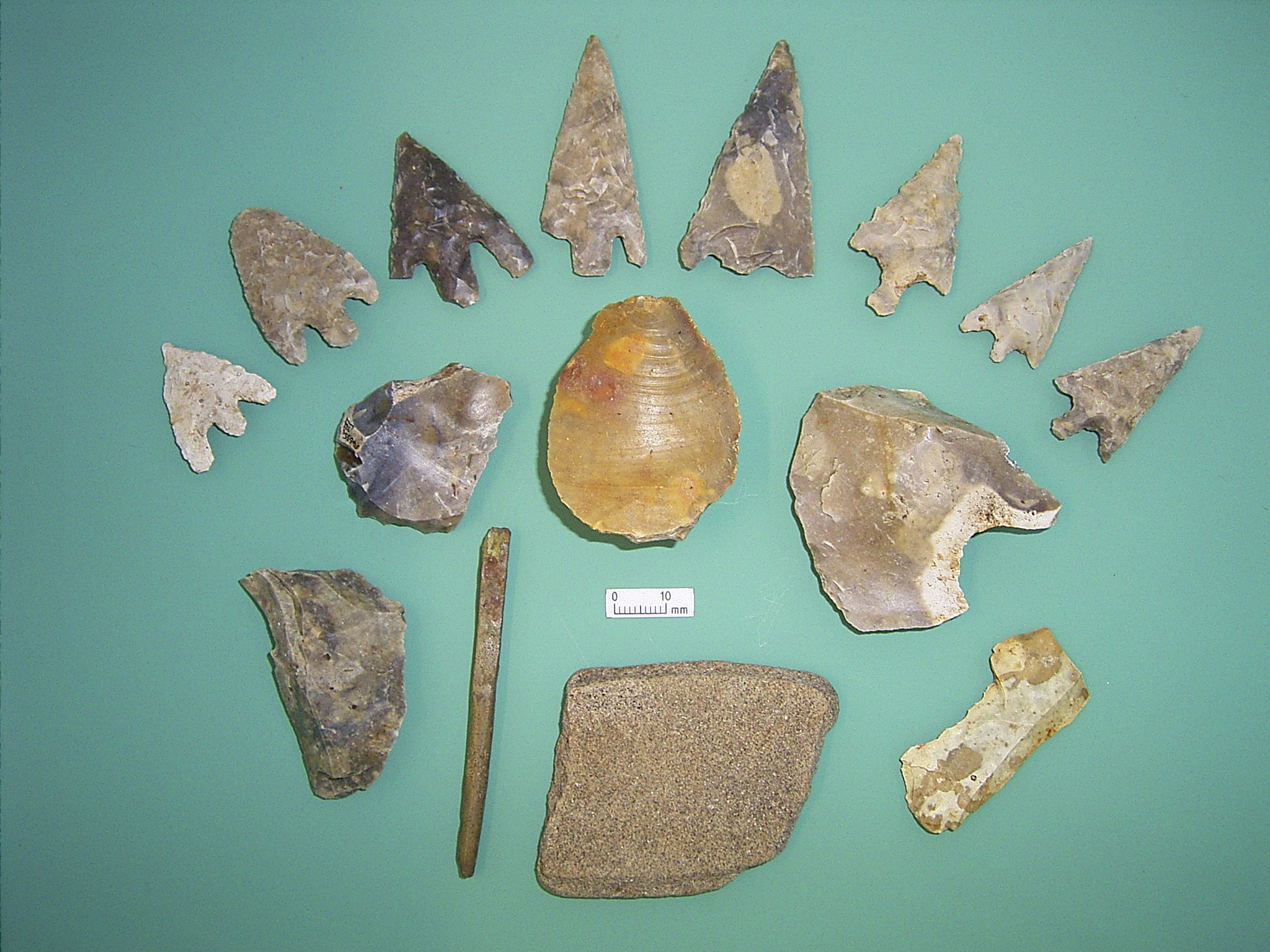The Stone Age gets its name from the material that our ancestors were most often using to make tools with, which of course, was stone! Stone artefacts can tell archaeologists a lot about our Stone Age ancestor’s human development; how they crafted, hunted and fought. People that lived during the Stone Age left no written records, so the archaeological record is absolutely essential to our understanding of their lives.
Image: A field archaeologist at work
Caption: Field archaeology (excavating an area) is a slow process and requires a lot of patience! Everything must be properly recorded both before it is removed from the ground, and then afterwards where it might be looked at under a microscope or sent for different kinds of testing.
Hammerstones are some of the first Stone Age tools. Hammerstones were stone cores with a sharpened edge, that could be used for cutting, chopping and scraping. From sharpening other stones into spear points, axes and arrowheads, to chop nuts, or grinding clay into pigment.
Hand axes, the longest-used tool in human history. Early Stone Age hand axes were rougher and bumpier in shape, however, towards the latter period of the Stone Age, they became sharper and more decorative. Hand axes were a multi-purpose tool, much like a Swiss army knife of today.
During the Stone Age in Britain, these tools were predominantly made of stone, and were usually made by flint-knapping. Flint-knapping is the process in which a stone tool is made by striking a large piece of stone with a hammerstone, into the shape of a tool.
Chips of stone shed during the flint-knapping process were used for spear tips and arrow heads. Both of these tools were used for hunting.
